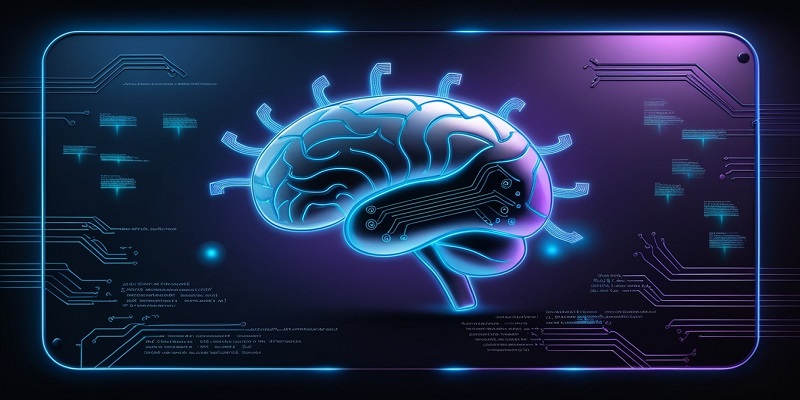Artificial Intelligence Development: Creating Intelligent Applications

Artificial Intelligence (AI) has rapidly transitioned from science fiction to reality, reshaping industries, enhancing productivity, and creating novel opportunities for growth. In recent years, the development of intelligent applications powered by AI has become a focal point in technology. Businesses, governments, and individuals now rely on AI-based systems to solve complex problems, optimize operations, and even predict future trends.
Understanding Artificial Intelligence Development
Artificial Intelligence is a broad field encompassing machine learning, natural language processing (NLP), computer vision, and more. At its core, AI development involves building systems that can process data, learn from it, and then use that information to make intelligent decisions. While many are familiar with AI as a technology, the process of developing intelligent applications is both fascinating and intricate. It requires a deep understanding of algorithms, data science, and how machines can simulate human reasoning.
Key Components of AI Development
The creation of AI-based applications is a step-by-step process that includes several essential elements. Each component plays a crucial role in determining the success of the application. Let’s break down the key components that contribute to AI development:
Data Collection and Processing
AI systems need data to learn. This data can come from various sources, including databases, sensors, or even social media. The quality of data is crucial because any bias or inaccuracy can lead to poor AI performance. After collecting the data, it must be processed, cleaned, and normalized. This ensures the data is in a format that the AI algorithms can understand.
Algorithm Selection
Algorithms are the foundation of AI systems. These mathematical models allow machines to learn patterns from data. Choosing the right algorithm depends on the type of problem the AI application is meant to solve. For instance, deep learning algorithms are suitable for tasks like image recognition, while reinforcement learning is ideal for training models in decision-making scenarios.
Training the Model
Once the data is collected and the algorithm is selected, the next step is training the model. Training involves feeding the data into the algorithm and allowing it to learn from the patterns. During this phase, the model makes predictions and compares them to actual outcomes. Adjustments are made continuously until the model can accurately predict results.
Evaluation and Testing
After training, the model needs to be tested for accuracy and reliability. Various evaluation metrics, such as precision, recall, and F1 score, are used to assess the model’s performance. Developers may also use test data sets to simulate real-world scenarios and ensure the model performs well under different conditions.
Deployment
The final stage of AI development is deploying the trained model into a real-world environment. This could be a mobile application, website, or even an embedded system. The AI model must be scalable and capable of handling large amounts of data in real-time.
Creating Intelligent Applications: A Step-by-Step Process
Building intelligent applications that utilize AI technology is not as simple as writing a few lines of code. It involves a thorough understanding of AI principles and a well-thought-out development strategy. Here’s a step-by-step guide to creating intelligent applications:
Step 1: Define the Problem and Use Case
The first step in developing an AI application is defining the problem you aim to solve. Intelligent applications are purpose-driven, meaning they are designed to address specific needs or improve processes. This step involves identifying the pain points, understanding user requirements, and outlining the potential impact of the AI solution.
For example, if you’re developing an AI-based customer support chatbot, your goal might be to reduce customer wait times and improve response accuracy. By clearly defining the use
-case, you create a focused development path for your AI project.
Step 2: Gather and Analyze Data
Data is the lifeblood of AI applications. After identifying the problem, the next step is gathering relevant data. This data can be historical, real-time, structured, or unstructured, depending on the nature of the application. For instance, if you’re building a recommendation system, you’ll need user behavior data such as purchase history, search patterns, and demographics.
Data analysis follows data collection. It involves identifying trends, patterns, and outliers that might influence how the AI model is trained. Data scientists and AI engineers often use statistical techniques and visualization tools to better understand the dataset. Data analysis not only improves model training but also highlights potential issues, such as data bias or missing values.
Step 3: Choose the Right Technology Stack
Choosing the right technology stack is crucial for AI development. The stack typically includes programming languages, frameworks, and platforms that support the development of AI models and applications. Popular programming languages for AI development include Python, R, and Java due to their extensive libraries and ease of use.
For machine learning models, frameworks like TensorFlow, PyTorch, and Scikit-learn are widely used. Meanwhile, cloud platforms such as AWS, Microsoft Azure, and Google Cloud provide powerful infrastructure to scale AI applications. The choice of the technology stack depends on factors like the complexity of the AI task, budget, and the expertise of the development team.
Step 4: Develop the AI Model
The next step is developing the AI model itself. This begins with selecting the appropriate algorithm based on the problem at hand. Common AI models include decision trees, neural networks, support vector machines, and k-nearest neighbors, among others. Some models, like neural networks, are suited for tasks requiring high levels of abstraction, such as image recognition or natural language processing.
Developers will often experiment with multiple models and tune their parameters to find the best fit. The goal here is to optimize the model’s performance on training data while avoiding overfitting—a situation where the model becomes too tailored to the training data and performs poorly on new, unseen data.
Step 5: Train and Validate the Model
Training the AI model is an iterative process. The selected data is fed into the model, and through learning algorithms, the model begins to recognize patterns. Depending on the type of AI being developed (e.g., supervised, unsupervised, or reinforcement learning), the model adjusts its predictions and refines its internal parameters.
After training, validation is conducted using a separate dataset. This step is critical because it ensures that the model can generalize well to new data. It helps developers fine-tune the model’s hyperparameters and minimize errors, thus improving accuracy.
Step 6: Integration with the Application
Once the AI model is trained and validated, it’s integrated into the main application. The integration phase involves connecting the AI model to the user interface (UI) and ensuring that it functions seamlessly with other application components, such as databases, APIs, and external systems.
For example, an AI-based recommendation engine in an e-commerce platform would need to fetch real-time data from user accounts, match it against product catalogs, and then deliver personalized recommendations through the UI. Ensuring smooth integration across different platforms is critical for user satisfaction and application performance.
Step 7: Testing and Iteration
Testing is a crucial step in AI development. Once the AI model is integrated into the application, rigorous testing must be performed. Testing AI systems is different from traditional software because AI models evolve and learn from data, meaning their behavior can change over time.
Developers conduct both functional and non-functional testing. Functional testing ensures the AI application meets its objectives and produces expected outputs. Non-functional testing evaluates performance aspects like speed, scalability, and security. This is followed by iterations where adjustments are made based on feedback and testing results.
Step 8: Monitoring and Continuous Learning
AI applications demand continuous monitoring and updates. Once developers deploy the model, they should regularly monitor it for accuracy, efficiency, and relevance. In many cases, retraining AI systems with new data becomes necessary as it becomes available. Continuous learning plays a crucial role in AI development because the real-world environment constantly evolves.
For instance, a chatbot must learn new conversational patterns or phrases over time to remain relevant and improve user interactions. Developers must ensure they regularly update the application to maintain optimal functionality.
Challenges in AI Development
AI development, though promising, is not without its challenges. Some common hurdles include:
Data Quality Issues:
AI systems are only as good as the data they’re trained on. Poor-quality data leads to inaccurate predictions or biased models, making data collection and processing a critical task.
Complexity in Model Building: Developing AI models that generalize well across diverse datasets can be challenging. Overfitting, underfitting, and tuning hyperparameters are some of the difficulties developers encounter.
Computational Costs:
AI models, especially those based on deep learning, require significant computational resources. This can be costly, particularly for startups or smaller organizations. Cloud-based solutions have mitigated this to an extent, but large-scale AI applications still demand considerable infrastructure.
Ethical and Privacy Concerns:
As AI systems become more integrated into daily life, ethical considerations such as data privacy, job displacement, and bias in AI algorithms are growing concerns. Developers need to ensure that AI systems are transparent, fair, and respect user privacy.
The Future of AI in Intelligent Applications
Artificial Intelligence is continually evolving, and its role in intelligent applications will only grow more significant. As AI technologies like natural language processing, machine learning, and computer vision advance, the possibilities for AI-driven applications expand. From healthcare to finance to customer service, AI is reshaping how we approach problem-solving.
Looking ahead, we can expect further innovations such as more advanced conversational AI systems, autonomous vehicles, and AI-powered solutions that will continue to redefine industries. With the combination of faster computing power, enhanced algorithms, and vast amounts of data, the future of intelligent applications is bright.
Conclusion
The development of intelligent applications using AI is a multi-faceted process requiring careful planning, skilled execution, and continuous learning. From defining the problem and gathering data to deploying the final model, AI development encompasses numerous stages that determine the success of the application. While challenges exist, the potential of AI to transform industries is undeniable. As AI technologies mature, intelligent applications will play an even more vital role in our day-to-day lives, offering smarter, more efficient solutions to complex problems.





